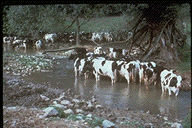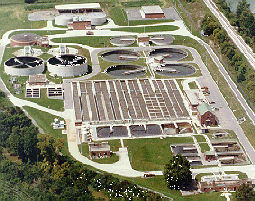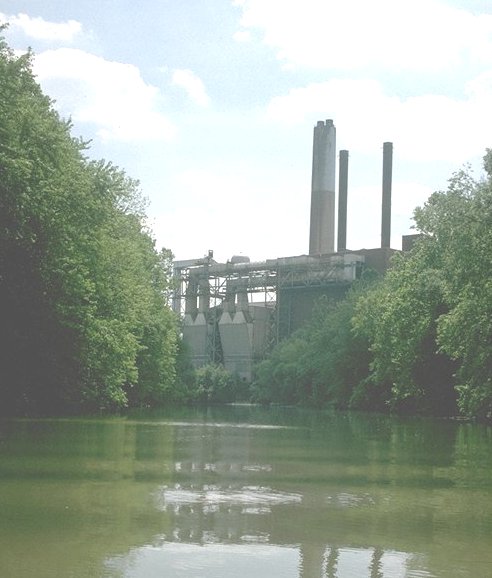Traditional Water Quality Indicators
Measuring chemical variables has been the traditional approach to water quality assessments. A few common chemical parameters for investigating water quality conditions are found below.
Common Chemical Water Quality Indicators
| Variable | Description | Example of Cause/Impact |
|---|---|---|
Available Oxygen |
The amount of molecular oxygen dissolved in water is an important measure of habitat availability for aquatic organisms. Low levels of oxygen result from the introduction of organic waste pollution which increases the rate of eutrophication and decreases the suitability for aquatic animal life. Sources include: agricultural runoff, urban runoff, and wastewater treatment plants. |   |
pH |
pH is a unit that expresses the strength of a solution based on its acidic or basic properties. Aquatic organisms can only function in a particular range of pH, and become forced to relocate when the surrounding water changes. Pollution from burning fossil fuels increases the amounts of sulfur and nitrogen oxides introduced into the water, thereby increasing the overall acidity. |   |
Turbidity |
The amount of suspended material in water can be measured by collecting the solids or assessing the relative light transmission of the suspension. The increased opaqueness is caused by increased sediment which negatively affect many aquatic organisms. Both algal production and fish reproduction and feeding can become diminished and some organisms, like shell-fish (continual filter-feeders) can become choked by sediment and eventually die in heavily turbid waters. |  |
Toxic Organic Compounds |
There are many chemicals that have the capacity to travel throughout a waterway. Many of these are pollutants and can cause significant distress to the surrounding habitat. Solutions such as oil or antifreeze enter a watershed from nearby runoff sources and directly poison the surrounding aquatic environment. With appropriate riparian vegetation, large surge concentrations of these chemicals can be prevented from directly entering the water. |  |
Heavy Metals |
Industrial effluents are major sources of heavy metals, and aquatic environments are extremely sensitive to even the smallest concentrations of these materials. Serious abnormalities have been reported in many aquatic organisms. Arsenic and mercury are two common examples of heavy metals, but other similar substances and compounds can also have significant effects on an aquatic community. |  |
Nutrients |
Additional nutrients, such as phosphorus and nitrogen, are added to streams by many avenues, but primarily through human sewage, animal waste, fertilizers and erosion. This area of water quality monitoring is greatly affected by both urban and agricultural human practices. Runoff from any inadequately covered lands can increase these nutrient loads and result in eutrophication of the nearby aquatic habitat. |   |
Although these chemical variables are useful to monitor impacts, they only provide a short-term picture of water quality at a sampled site and each can only represent a portion of a complete assessment. A couple disadvantages of using only chemical indicators include:
- Effects of certain isolated chemicals in a laboratory setting can be dramatically different than it's interactive effects with other variables
- Chemical testing is extremely expensive and labor intensive and not practical for monitoring non-point pollution sites such as urban and agricultural run-off
Chemical testing is much more applicable for point source pollution where industrial contamination is suspected.